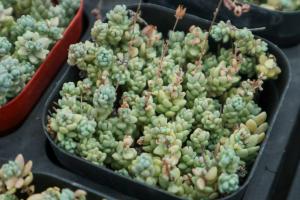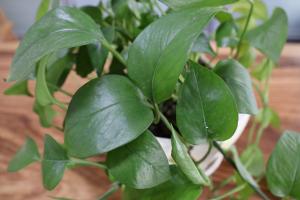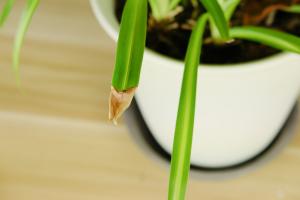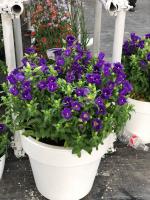Do You Water Spider Plants from Top or Bottom?
Spider plants (Chlorophytum comosum) are popular houseplants known for their ability to purify the air and their easy care. One of the most common questions among spider plant owners is whether they should water their plants from the top or bottom. The answer is not straightforward, as it depends on several factors. In this article, we'll explore the pros and cons of both methods and how to decide which one is best for your spider plant.
Watering Spider Plants from the Top
Watering spider plants from the top is the most common method. It involves pouring water over the soil until it drains out from the bottom of the pot. Here are some of the advantages and disadvantages of watering spider plants from the top:
Advantages: Watering from the top allows you to see how much water the plant is getting and whether the water is reaching every part of the soil. It also helps to flush out any buildup of salts or minerals in the soil.
Disadvantages: Pouring water from the top can disturb the delicate roots and foliage of spider plants, especially if the water is too cold or too hot. It can also lead to overwatering, which can cause root rot and other problems.
Watering Spider Plants from the Bottom
Watering spider plants from the bottom is less common, but some people prefer this method. It involves placing the pot in a saucer filled with water and letting the plant soak up the water through the drainage holes at the bottom of the pot. Here are some of the advantages and disadvantages of watering spider plants from the bottom:
Advantages: Watering from the bottom allows the plant to absorb water at its own pace, without the risk of getting too much or too little water. It also helps to prevent water from spilling on the foliage, which can cause damage or encourage fungal growth.
Disadvantages: Watering from the bottom can make it difficult to know how much water the plant is getting, as the soil may absorb more or less than you expected. It can also lead to the buildup of salts or minerals in the soil, as there is no flushing action.
How to Decide Which Method to Use
So, which method of watering spider plants is best for you? The answer depends on several factors, including:
The size of your spider plant: Larger plants may benefit from watering from the bottom, as they may need more water than you can pour from the top without causing damage.
The type of pot: Some pots are better suited for top watering, such as those with wide openings or shallow depths. Others may be designed for bottom watering, such as those with saucers or reservoirs.
The environment: If your spider plant is located in a dry or arid environment, you may need to water it more frequently and from the top to ensure that it gets enough water.
Your preferences: Ultimately, the method of watering you choose depends on what you feel most comfortable with and what works best for your spider plant.
No matter which method you choose, there are a few tips to keep in mind for watering spider plants:
Never let the soil become completely dry, as this can cause the plant to wilt and die.
Avoid overwatering, as this can cause root rot and other problems.
Use room temperature water, as very cold or very hot water can shock the plant.
Consider using a water-soluble fertilizer every few months to help your spider plant grow and thrive.
In conclusion, whether you water spider plants from the top or bottom depends on several factors, including the size of your plant, the type of pot, the environment, and your personal preferences. No matter which method you choose, be sure to water your spider plant regularly, but not too much, and to provide it with the care and attention it needs to flourish.

 how many times do yo...
how many times do yo... how many planted tre...
how many planted tre... how many pine trees ...
how many pine trees ... how many pecan trees...
how many pecan trees... how many plants comp...
how many plants comp... how many plants can ...
how many plants can ... how many plants and ...
how many plants and ... how many pepper plan...
how many pepper plan...
































